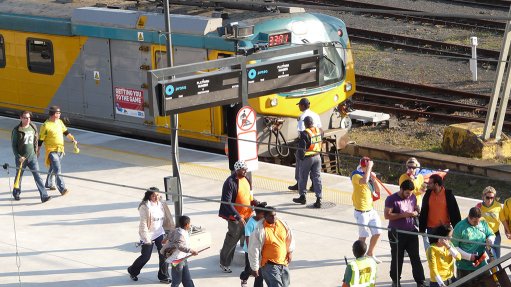
South African public transport operators need “to do more with less” as the economy contracted and the national fiscus faced increasing financial pressure, said National Treasury intergovernmental relations deputy director-general Malijeng Ngqaleni on Monday as she addressed the Southern African Transport Conference in Pretoria.
She noted that the current system of public transport subsidies was “clearly not sustainable”. This system largely subsidised the middle-class through subsidies to train and bus services, such as Metrorail and Gautrain, and not the poor, who primarily used the unsubsidised minibus taxi system.
She regarded the minibus system as “very efficient”, as it serviced 67% of public transport users, collecting 71% of public transport fares in South Africa.
She added that South Africa’s current public transport system was “by and large very costly and not very efficient”, especially as private car use continued “to accelerate”.
“We are not doing enough to help the poor. In our current fiscal environment, there must be a better way.”
Ngqaleni said the South African government had spent R167-billion on public transport infrastructure and operational subsidies (excluding the road network) over the last ten years, at an average yearly growth rate of 18%.
This growth rate could, however, be lower in future, owing to lower economic growth, she added.
Quoting figures from the 2014 National Treasury Expenditure Performance Review of South Africa’s Public Transport and Infrastructure Systems, she noted that the municipal bus service received between R16.75 and R24.36 operating subsidy per passenger per trip, while conventional bus services, such as Putco, received between R11.40 and R16.89.
Bus rapid transit (BRT) systems received between R11.76 and R15.12. The operating subsidy for Metrorail was R3.73 per passenger per trip, and R60.30 for the Gautrain, which she regarded as “a huge subsidy”.
The Gautrain, however, recovered 57% of its costs through the fare box, with Metrorail at 39%, BRTs at between 28% and 44%, conventional bus systems between 31% and 44% and municipal bus systems between 13% and 31%.
Ngqaleni was not, however, opposed to public transport subsidies.
“We need to subsidise public transport systems. Public transport systems the world over are almost always subsidised.”
She said Taiwan and Hong Kong could recover around 100% of their costs through fare income, with the US at between 26% and 56%. Fare box recovery in Europe was between 40% and 91%.
Ngqaleni suggested that public transport spending in South Africa should increasingly be linked to land use planning and integration between public transport modes, for example.
“We should use the fiscal system to drive integration.”
It was also possible to use subsidies to create a safer, more convenient minibus taxi system, without surrendering any of the system’s current efficiency.
She emphasised, however, that there was no time frame yet for the provision of subsidies to the taxi industry.